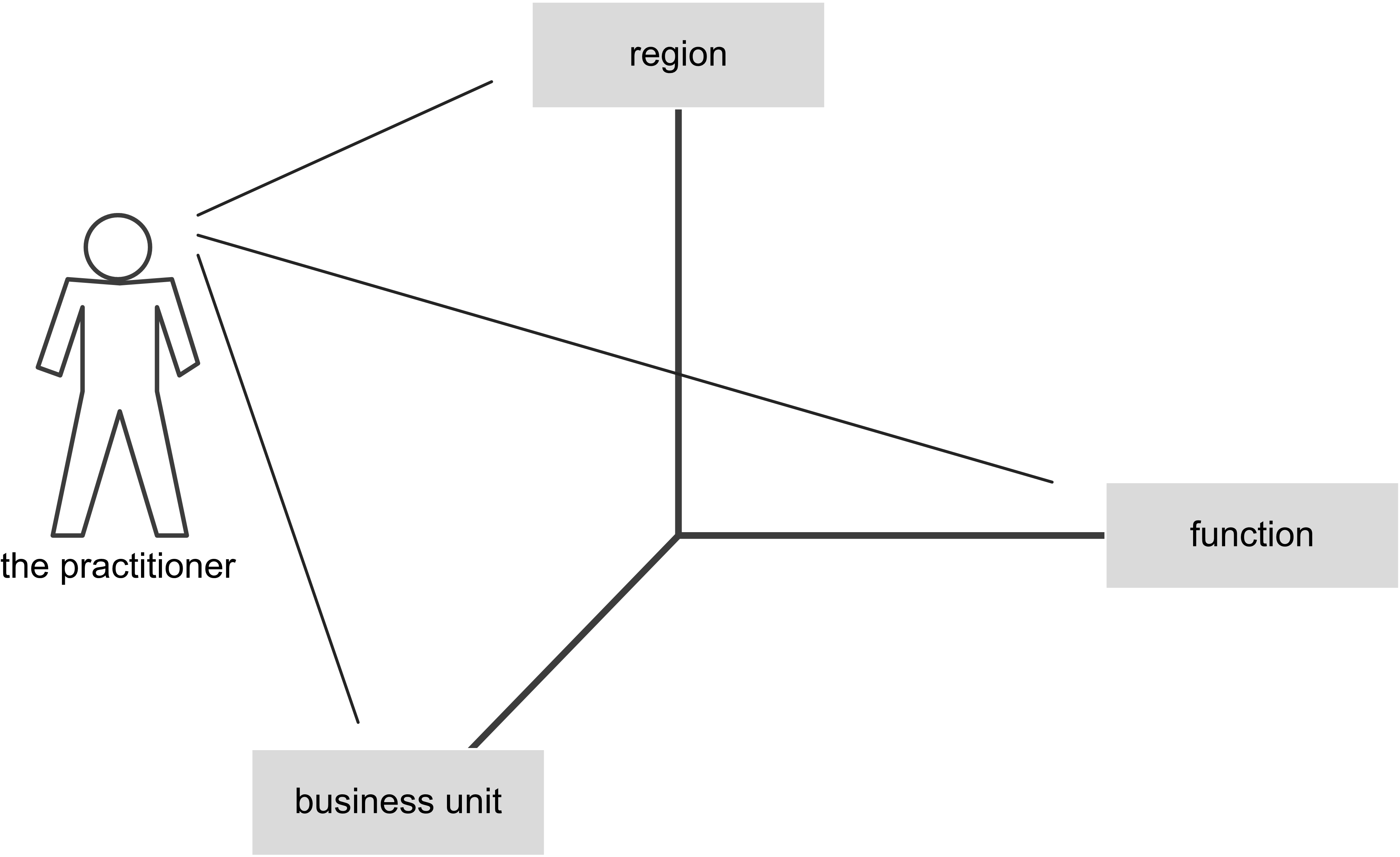By: Doug Collins
Depending on the people involved, their motivations, and the phase of the moon, you may or may not find fertile ground for the practice of collaborative innovation. In this article innovation architect Doug Collins explores the fecund places that you, as a practitioner, may want to think about planting your seed of ideation to ensure a bountiful harvest.
Once upon a Time
Once upon a time in a land nearby, I became involved in a project to integrate two large, disparate, yet functionally chained applications of software.
The integration, were we to complete it, would benefit the clients greatly. We did not in return expect parades. We did expect a nice check and perhaps a “thank you” from our more emotive customers.
Integrating software can be hard—hard—when separate companies, each owning their respective piece, attempt to shake hands. Please consult for validation anyone who has led their organization’s “partner alliance” program. In this case, however, luck favored us: we owned both pieces.
The work moved fast at first. We drew plans. We identified resources. We bonded over bowling one evening.
In time, however, the work slowed. Commitment faltered. The scheduled slipped. The pins remained standing.
My boss then had the bracing habit of getting to the heart of the matter. He walked into my office one morning, declared he would “get to the bottom of this #$@&#@*%,” and left for the airport to meet with the three executives sponsoring the project.
Later in the week he returned. I found that he had had one-on-one meetings with each of the three sponsors. The first claimed ignorance. Was there indeed a problem? How could that be? The second consoled my boss. No worries—all will be fine. Go home and await good news.
The third sponsor, to her credit, shared the truth. The three sponsors could not stand to be in the same room together; much less engage one another in deep and meaningful conversations on how they might aid the clients through an innovative integration. Each sponsor, who had joined the organization through an acquisition, craved running the larger enterprise.
The sponsors’ staff saw the discord. They withdrew their support. Within six months the program disbanded. The program leaders, including my boss, left to graze in greener pastures.
What lesson did I learn? Sometimes rationality drives. Sometimes rationality takes the back seat. Sometimes your one choice is whether to remain a passenger.
The Unleveled Playing Field
As someone who leads the practice of collaborative innovation within your organization, you, too, find yourself in situations ranging from the rational to the cuckoo-cuckoo. You find, to your delight, places in the organization where people embrace the practice as a natural means to a larger end. You find, to your frustration, people in the organization carrying the innovation charter working on everything but helping their colleagues realize their potential for leadership as they pursue their ideas.
In this article, I explore places in the organization where you may find fertile ground for your practice.
My suggestion: keep irons aplenty in the fire. You will be less tempted to waste time trying to fit a square peg in a round hole if you know you have a warmer reception waiting for you elsewhere.
The Bones of an Organization
The organization, in pursuing its charter, designates authority by region, function, and business unit. A global organization may have multiple regions (e.g., North America, Asia-Pacific, etc.). A local or national organization may have one, only. The functions provide the administrative support: legal, human resources, purchasing, and logistics, for example. The business units develop the offer to the customer. Business units may come as brands (e.g., in the consumer packaged goods industry), as technologies (e.g. in the computer hardware industry), or as market segments (e.g., consumer, professional, etc.) (figure 1).
figure 1: the bones of an organization—region, function, business unit
Regions
A regional operation can offer fantastically fertile ground for the practice of collaborative innovation—particularly in global organizations. People who work in regional offices suffer the Robinson Crusoe effect: they toil on an island by themselves, struggling with limited aid and comfort from the headquarters staff who enjoy the modern amenities of polite society. They long for a way to reconnect with the mother ship in meaningful ways. These Crusoe’s likewise bring powerful gifts to the table: the gift of the ground truth as they see in a region the organization would like to serve.
The downside I observe in working with regional operations is that you may be challenged to find individuals willing to take on the practice, locally. Regions tend to run lean. As a result you may find that you have to be prepared to devote more of your time serving in this role, coaching and doing a bit of traveling (figure 2).
Figure 2: reconnecting with the mother ship
Functions
Functions, too, can serve as fantastically fertile ground for the practice of collaborative innovation. Functions such as information technology, human resources, finance, legal, and supply chain tend to have well defined processes by which they serve a largely internal audience. You, who bring the practice of collaborative innovation to the table, can help them innovate around those processes and, in time, re-imagine them.
I have found, too, that people in functional roles tend to make excellent practitioners because they focus on solving particular problems. To them, the practice serves as an effective means to achieve their larger end. They waste little time reinventing the wheel with you.
The downside to engaging the functional roles in the practice comes down to time. Organizations relentlessly seek greater productivity and cost savings from groups perceived as manning the back office. As a result, your leadership must speak to how the practice can help them achieve greater productivity and how they might go about the practice in the most efficient way possible. Become the means to their end and you are golden.
Business Units
I have found the business units, whether they organized by brand, product line, or segment, to be a mixed bag.
On the one hand, the business units exist to deliver the organization’s value to the customer. To this end, the practice holds promise in terms of helping people in the business units engage in collaborative innovation around topics such as what new offers to the market might we make, what possibilities do we see for further differentiation, and what new customers might we serve that we do not serve today.
Fertile ground
On the other hand, because the charter of innovation has historically rested in these groups, the notion of opening the practice to a larger audience can seem threatening or pointless. Asking others for ideas can make the brand manager, the product manager, and the segment manager feel vulnerable if they believe the organization pays them good money to have all the answers. Some organizations do.
In my experience, you can make headway if you can find like-minded individuals to engage brand by brand, product line by product line, and segment by segment. Expect setbacks.
Parting Thoughts
People who practice collaborative innovation succeed to the extent they can proliferate the practice amongst their organization and, when looking externally, the larger enterprise.
Having a plan of attack—a campaign plan—can be enormously helpful in this regard.
My guidance? Leave no group untouched and no stone unturned. Expect the pleasant surprise of meeting like-minded people in the various nooks and crannies of your organization.
By Doug Collins
About the author
 Doug Collins serves as an innovation architect. He helps organizations big and small navigate the fuzzy front end of innovation by developing approaches, creating forums, and structuring engagements whereby people can convene to explore the critical questions facing the enterprise. He helps people assign economic value to the process and ideas that result.As an author, Doug explores ways in which people can apply the practice of collaborative innovation in his series Innovation Architecture: A New Blueprint for Engaging People through Collaborative Innovation. His bi-weekly column appears in the publication Innovation Management. Doug serves on the board of advisors for Frost & Sullivan’s Global community of Growth, Innovation and Leadership (GIL).
Doug Collins serves as an innovation architect. He helps organizations big and small navigate the fuzzy front end of innovation by developing approaches, creating forums, and structuring engagements whereby people can convene to explore the critical questions facing the enterprise. He helps people assign economic value to the process and ideas that result.As an author, Doug explores ways in which people can apply the practice of collaborative innovation in his series Innovation Architecture: A New Blueprint for Engaging People through Collaborative Innovation. His bi-weekly column appears in the publication Innovation Management. Doug serves on the board of advisors for Frost & Sullivan’s Global community of Growth, Innovation and Leadership (GIL).
Today, Doug works at social innovation leader Spigit, where he consults with clients such as BECU, Estee Lauder Companies, Johnson & Johnson, Ryder System and the U.S. Postal Service. Doug helps them to realize their potential for leadership by applying the practice of collaborative innovation.
Photo from shutterstock.com



